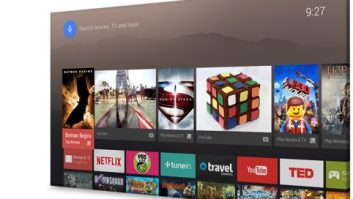The outlook for linear TV and traditional broadcasters is not as dire as some would believe according to a new white paper from SpotX.
The report looks at the growth of digital media and concludes that while technological advances are changing consumer behaviour, linear TV and traditional broadcasters are not dying.
Instead legacy media companies are evolving to cater to the new digital reality.
The new reality is that few families gather in the living room to watch a programme together. Instead the future of video is up for grabs, and there will be experiments to find the best business models to serve viewers both at home and on the go.
“Although on-demand usage is increasing, linear television remains popular due to the immediacy of traditional live programming. Just think about the massive audiences drawn to the World Cup or the Game of Thrones season finale,” said Mike Shehan, co-founder and CEO at SpotX.
“As a company, we are heavily focused on live TV in over-the-top (OTT) because of its growing availability across multiple devices which inherently opens up huge opportunities for media owners to earn more revenue and advertisers to reach more consumers.”
The report includes five trends contributing to the continued rise of digital:
· Linear TV continues to draw viewers. “TV has gone beyond the television set—it’s expanded into this idea of Total Video, a phenomenon that spans all screen and all streams,” the report says. While linear viewing will likely drop by five per cent to 15 per cent among 18 to 24 year olds, it will remain a cornerstone of daily consumption behaviour.
· Faster internet opens the gate to quality viewing: Quality video is immersive and people are willing to pay for it. The faster internet is also transforming distribution, letting consumers have linear-quality experiences on a variety of devices without a traditional cable subscription, the report says, pointing increased time spent on computers and smartphones.
· Mobile, bringing all streams to all screens: TV is no longer confined to the living room. Total video means access to content on the go on whatever device one prefers. With mobile networks getting faster, new viewing habits are being formed.
· SVoDs and vMVPDs, Pioneers of a new age in TV and video: The businesses capitalising on the disruption caused by improved broadband are subscription video on demand services and virtual MVPds. Original streaming content has increased five-fold from 2013 to 2017 and skinny bundles bridge the gap between traditional pay-TV and the on-demand world. The lines between SVoD and vMVPDs is already blurring, the report notes.
· Stacking subscriptions: The success of SVoD services and vMVPD has big media companies jumping into the subscription business. One area of fallout is subscribers might need multiple subscription to get all of the content they want. Already more than half of those responding to one survey said they have at least two services.







